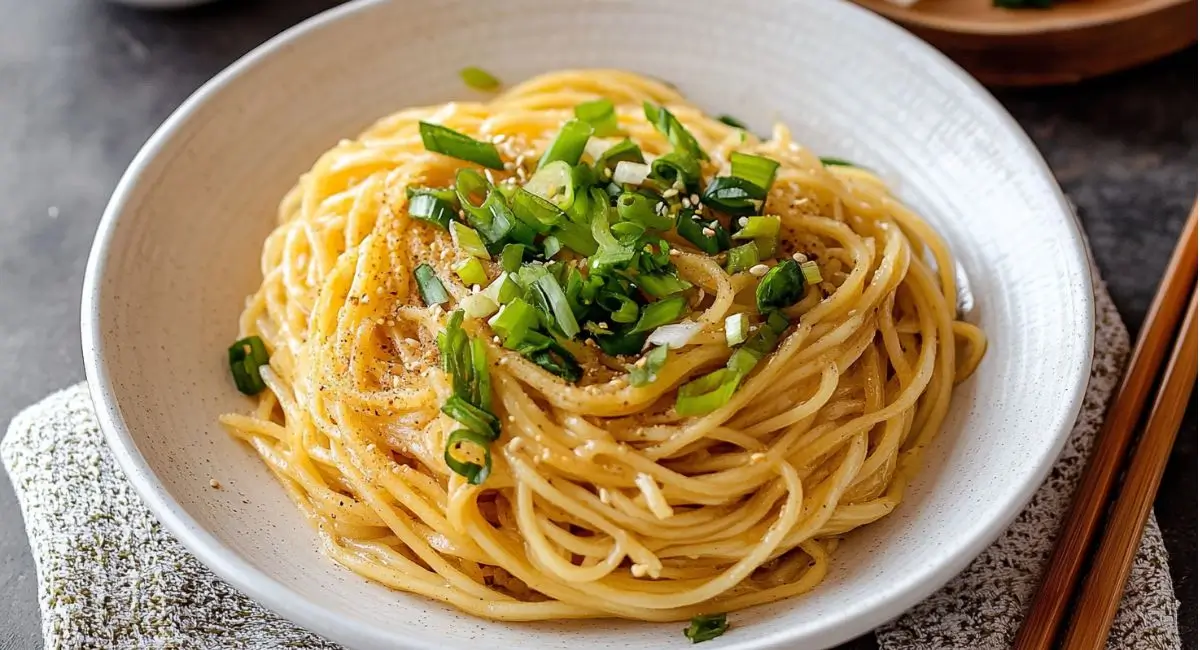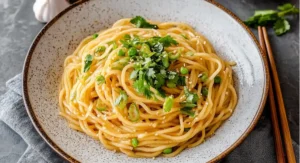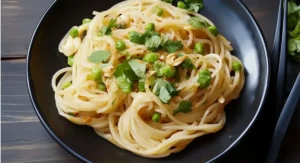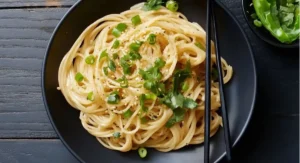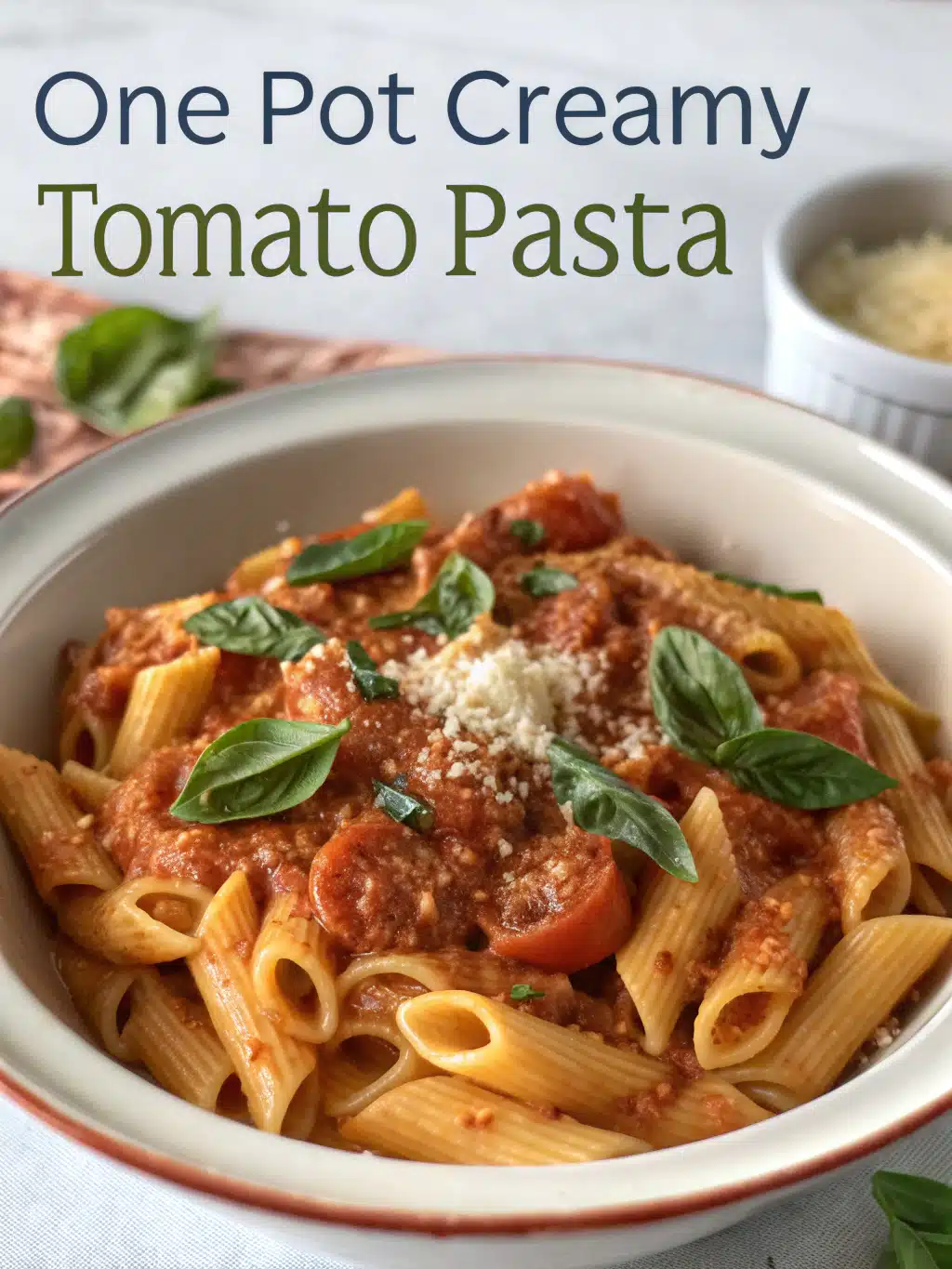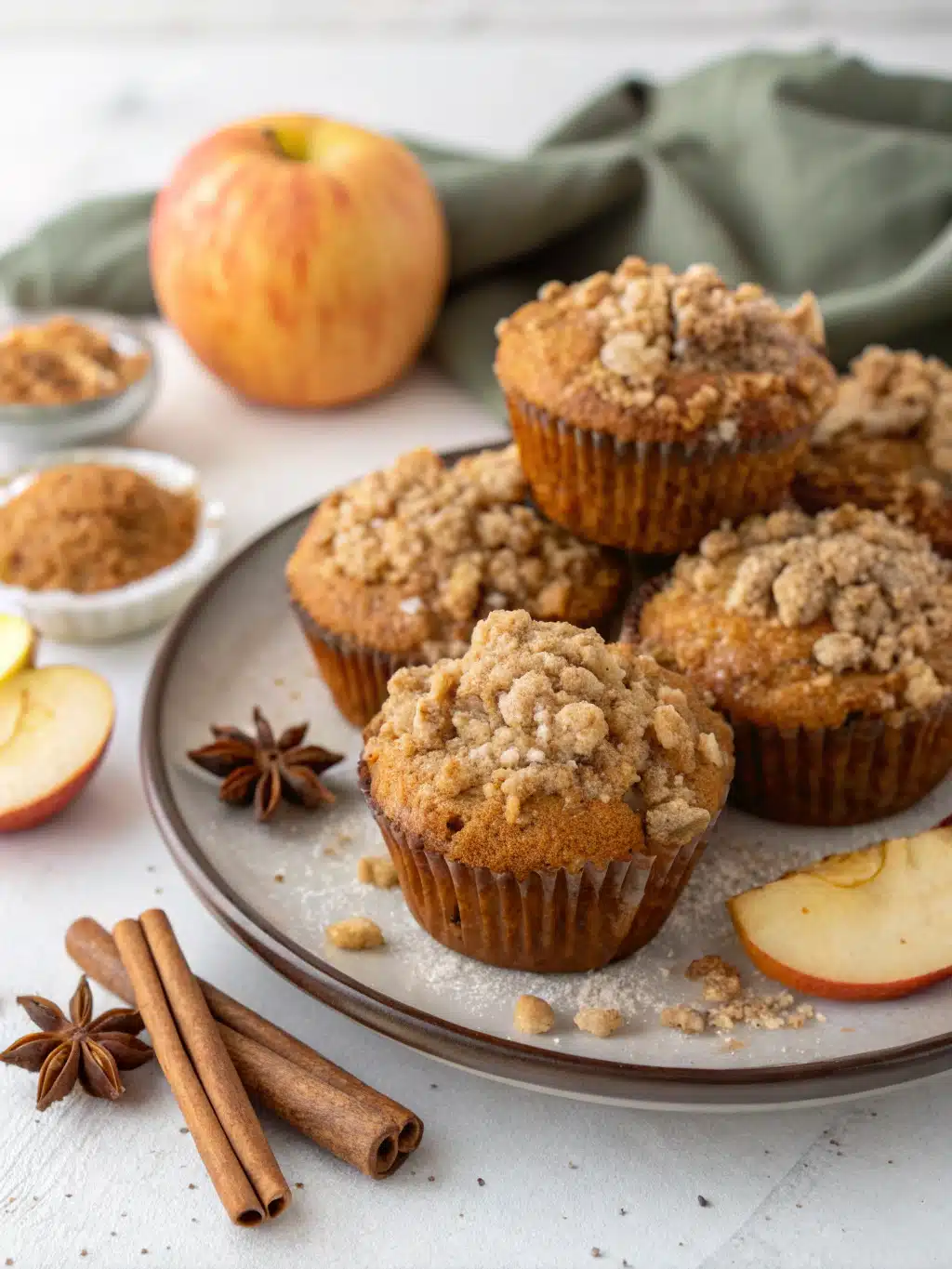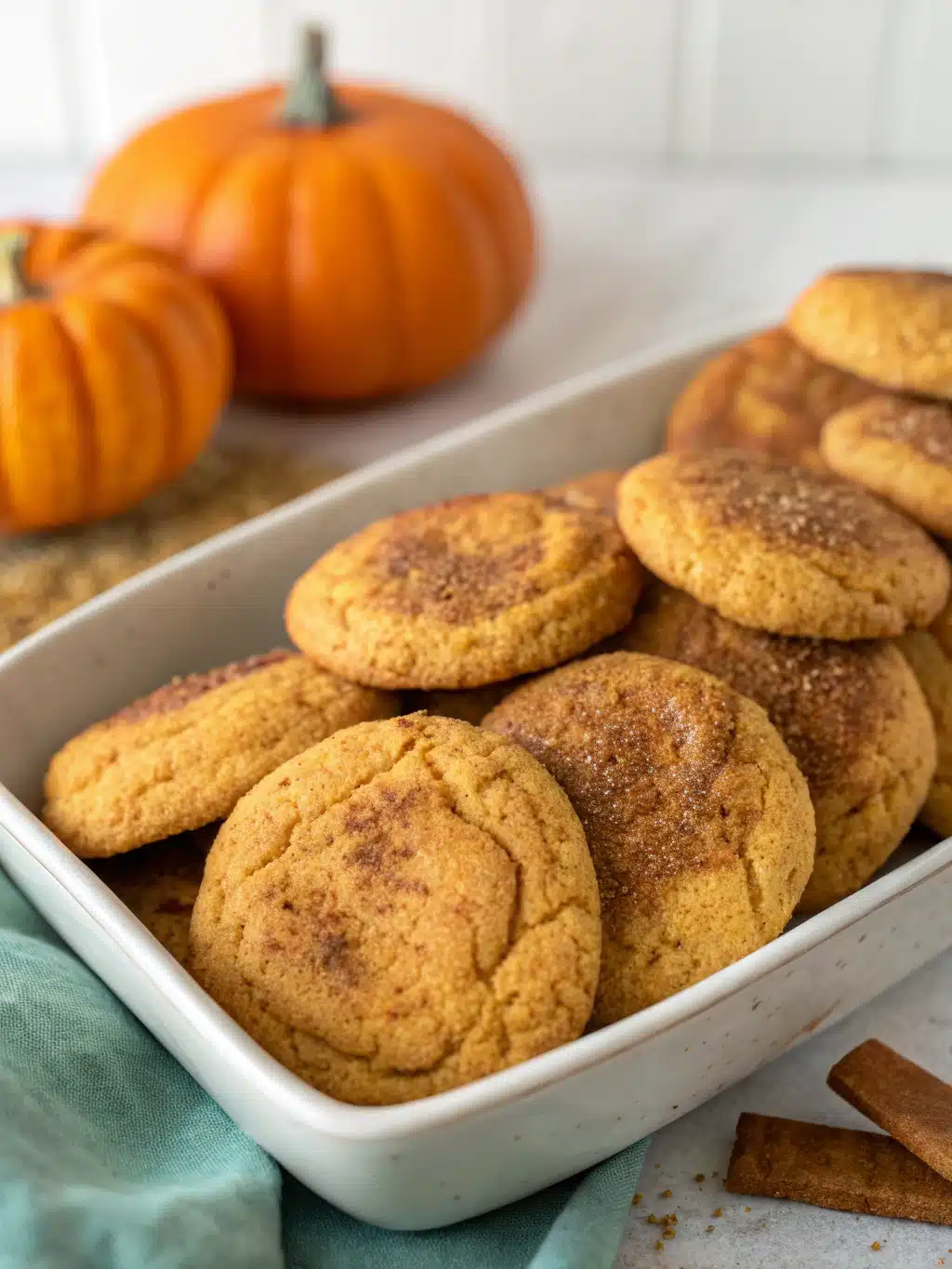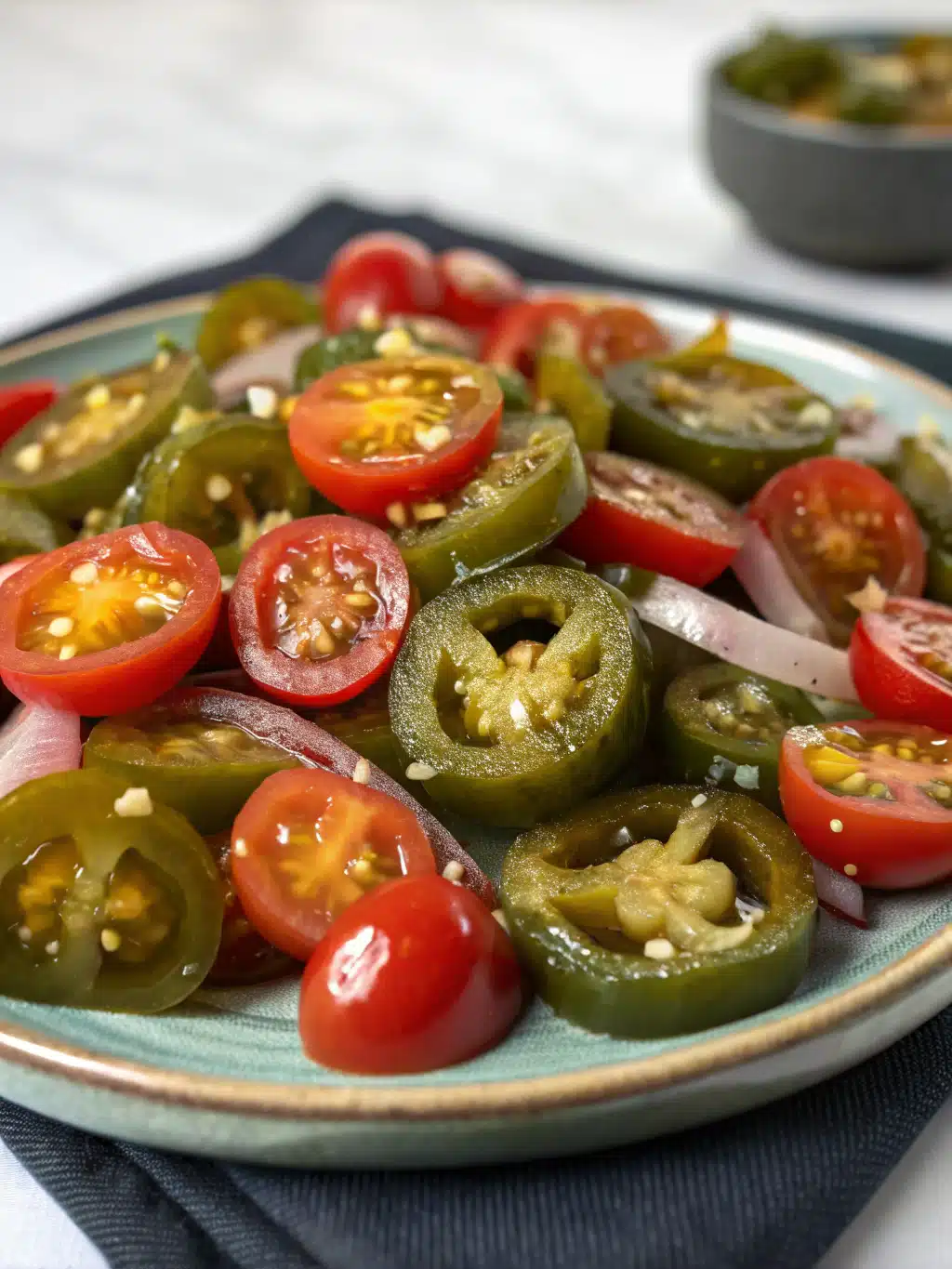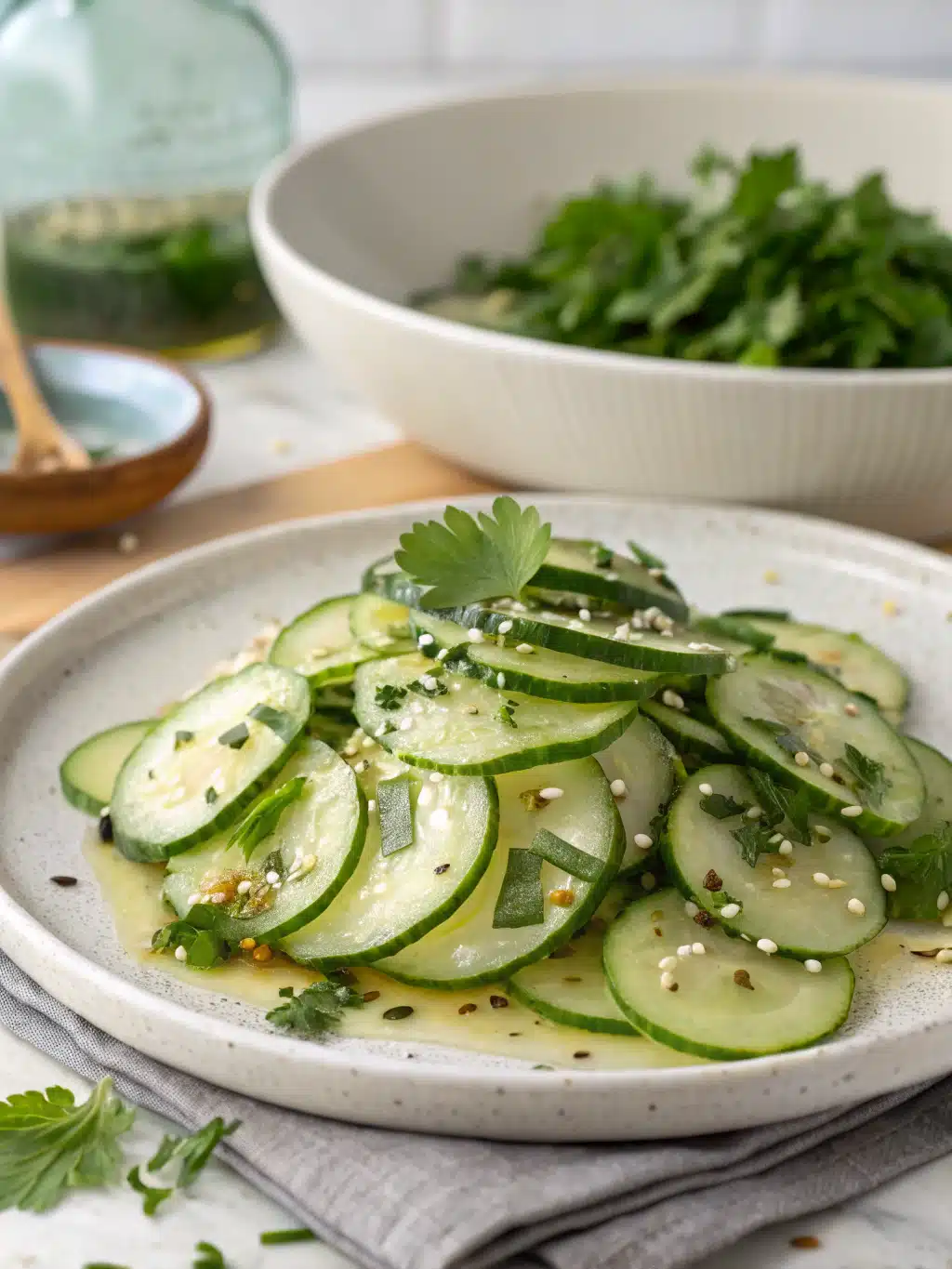Estimated reading time: 1 minute
Get ready to experience pure noodle nirvana! Vietnamese Garlic Noodles (or Mì Xào Tỏi) are a cult classic for a reason. Imagine slippery noodles coated in an intensely savory, garlicky, buttery sauce with just the right touch of sweetness and umami. It’s a dish that originated in Vietnamese-American communities, famously popularized by restaurants like Crustacean in California, and has since captured the hearts (and stomachs) of food lovers everywhere.
While often enjoyed at restaurants, achieving that perfect balance of flavors at home can seem daunting. But fear not! This ultimate guide and recipe will demystify the process, giving you all the tips and tricks to recreate those addictive, restaurant-quality Vietnamese Garlic Noodles right in your own kitchen. We’re talking deep garlic flavor, perfectly cooked noodles, and a sauce that clings beautifully. Forget takeout – this is easy enough for a weeknight but impressive enough for guests!
Table of contents
Why You’ll Love This Vietnamese Garlic Noodles Recipe
- Incredible Flavor: The sauce hits all the right notes – savory, sweet, garlicky, buttery, and packed with umami. It’s simply addictive!
- Restaurant Quality at Home: We’ve cracked the code to achieve that signature taste and texture you crave.
- Surprisingly Easy: Despite its complex flavor, the process is straightforward with clear steps.
- Customizable: Easily add your favorite protein or adjust the spice level.
- Crowd-Pleaser: This dish is universally loved and perfect for sharing (though you might not want to!).
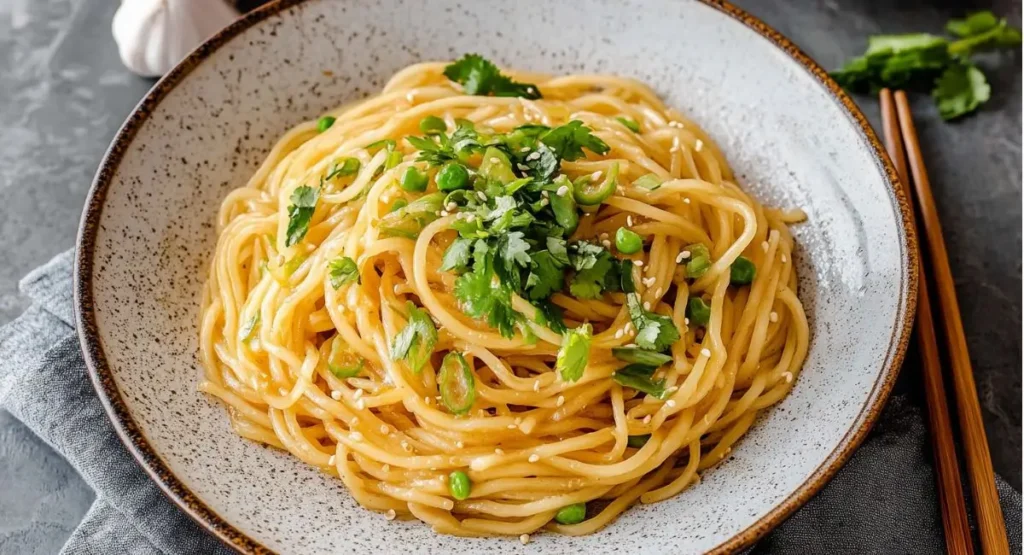
Ingredients You’ll Need
Getting the right ingredients is key to nailing the flavor profile. Here’s what you’ll need:
- Noodles: 1 lb (450g) Noodles (See Note Below)
- Butter: 1/2 cup (1 stick or 113g) Unsalted Butter
- Garlic: 8-10 large cloves Garlic, finely minced (about 1/4 to 1/3 cup) – Don’t skimp!
- Fish Sauce: 3 Tablespoons Premium Fish Sauce (nuoc mam)
- Oyster Sauce: 2 Tablespoons Oyster Sauce
- Sugar: 2 Tablespoons Granulated Sugar (or Brown Sugar)
- Soy Sauce: 01 Tablespoon Low Sodium Soy Sauce (optional, for deeper color and saltiness)
- Black Pepper: 1/2 teaspoon Freshly Cracked Black-Pepper, or to taste
- Parmesan Cheese: 1/4 cup Finely Grated-Parmesan Cheese (See Note Below)
- Garnish (Optional but Recommended):
- Chopped Fresh Cilantro
- Thinly Sliced Green Onions (scallions)
Ingredient Notes & Substitutions
- Noodles: This is crucial! While traditional Vietnamese noodles exist, Spaghetti is the most commonly used noodle for this dish in Vietnamese-American restaurants and provides the perfect texture. Look for regular spaghetti or thin spaghetti. Asian egg noodles (like Chow Mein noodles) can also work, but cook according to their package directions – they often cook faster. Avoid very thin noodles like angel hair, as they can become mushy. Cook them al dente (slightly firm to the bite) as they will cook a bit more when tossed in the sauce.
- Garlic: Fresh garlic is non-negotiable. Use large cloves and mince them finely yourself. Pre-minced jarred garlic often has a harsh, acidic taste and lacks the depth of fresh. The amount might seem like a lot, but it mellows beautifully when cooked in butter.
- Butter: Use good quality unsalted butter. This allows you to control the saltiness better, especially with salty ingredients like fish sauce and soy sauce.
- Fish Sauce: This is the backbone of the savory, umami flavor. Choose a high-quality brand (Red Boat, Three Crabs, or Megachef are popular choices). Don’t be intimidated by the smell; it transforms during cooking.
- Oyster Sauce: Adds depth, a touch of sweetness, and helps thicken the sauce slightly. Look for brands like Lee Kum Kee (Panda brand is common).
- Sugar: Balances the saltiness of the fish-sauce and oyster sauce. Adjust-slightly based on your preference and the specific brands of sauces used.
- Parmesan Cheese: Yes, Parmesan! While not traditional in Vietnam, it’s a key ingredient in the popular Vietnamese-American version. It adds a salty, umami depth and richness that complements the garlic butter sauce surprisingly well. Use finely grated for better melting and incorporation. See the dedicated section below for more on the Parmesan debate! If omitting, you may need to slightly increase other salty/umami elements.
- Soy Sauce: Optional, but adds another layer of savoriness and a nice brown color to the noodles. Use low-sodium to avoid making the dish overly salty.
Essential Equipment
You don’t need fancy gear, but these items will make the process smoother:
- Large Pot: For boiling the noodles.
- Large Skillet or Wok: Needs to be big enough to hold all the noodles and allow for tossing without spilling. A 12-inch skillet or larger is ideal.
- Colander: For draining the noodles.
- Measuring Cups and Spoons
- Knife and Cutting Board: For mincing-garlic and chopping garnishes.
- Whisk or Spoon: For combining the sauce-ingredients.
- Tongs or Large Spoons: For tossing the noodles effectively.
How to Make Vietnamese Garlic Noodles (Step-by-Step Instructions) –
Follow these steps for garlic noodle perfection:
Step1: Cook the Noodles
- Bring a large-pot of generously salted water to a rolling boil.
- Add the spaghetti (or your chosen noodles) and cook according to package directions until al-dente (usually 1-2 minutes less than the package time). It should still have a slight bite, as it will cook further in the sauce.
- Important: Before draining, reserve about 1 cup of the starchy pasta water. This magic liquid can help emulsify the sauce later if needed.
- Drain the noodles well in a colander. You can toss them with a tiny drizzle of neutral-oil (like vegetable or canola) to prevent sticking while you prepare the sauce, but don’t rinse them!
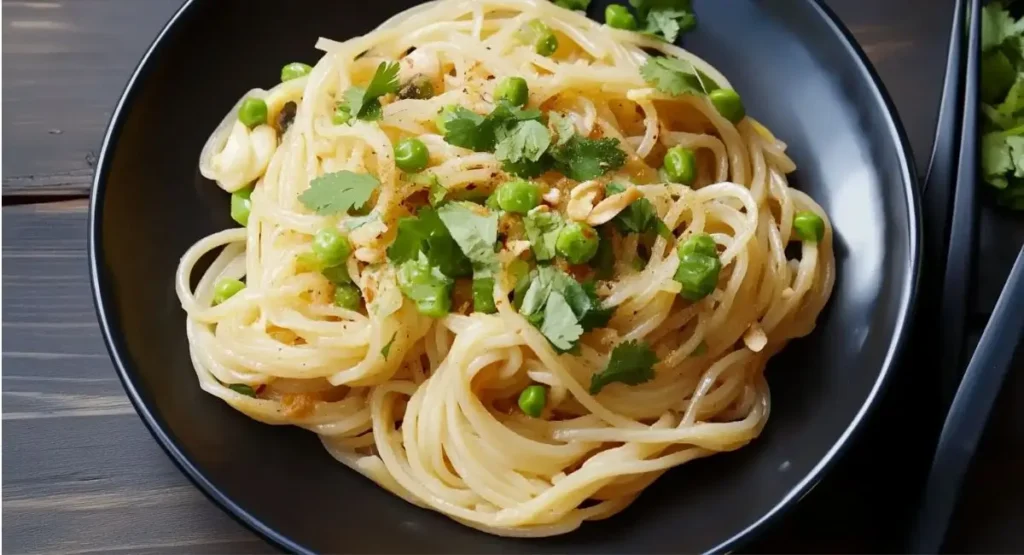
Step2: Prepare the Garlic Butter Sauce
- While the noodles are cooking, or just after they’re drained, place your large skillet or wok over medium-low heat.
- Add the unsalted-butter and let it melt completely.
- Add the finely minced-garlic to the melted butter. Cook gently, stirring constantly, for 2-3 minutes. You want the garlic to become fragrant and soften, turning a very light golden color, but do not let it brown or burn! Burnt garlic tastes bitter and will-ruin the dish. Adjust the heat lower if necessary.
- Whisk in the fish sauce, oyster sauce, sugar, soy sauce (if using), and black pepper. Stir until the sugar is-dissolved and the sauce is well combined. Let it simmer gently for about 1 minute for the flavors to meld.
Step 3: Combine Noodles and Sauce
- Add the drained noodles directly into the skillet with the simmering garlic butter sauce.
- Add the grated Parmesan cheese.
- Using tongs or large spoons, toss the noodles continuously but gently to coat every strand evenly with the sauce and melted Parmesan. Do this for about 1-2 minutes, allowing the noodles to absorb the sauce and heat-through.
- If the sauce seems too thick or the noodles are sticking, add a splash (1-2 tablespoons at a time) of the reserved pasta water to loosen things up and create a glossier sauce. Toss well to incorporate.
- Taste and adjust seasoning if needed – more black pepper? A tiny bit more fish sauce for saltiness?
Step 4: Garnish and Serve
- Remove the skillet from the heat.
- Transfer the Vietnamese Garlic Noodles to a serving platter or individual bowls.
- Garnish generously with chopped fresh cilantro and sliced green onions.
- Serve immediately while hot!
Tips for Success: The BEST Garlic Noodles Every Time
- Don’t Overcook the Noodles: Seriously, al dente is key. Mushy noodles will fall apart and won’t hold the sauce well.
- Mise en Place: Have all your ingredients-measured and prepped before you start cooking, especially the sauce components. The cooking process moves quickly once you start the sauce.
- Master the Garlic: Use fresh, finely minced garlic. Cook it gently over medium-low heat in the butter until fragrant but not brown. This infuses the butter without bitterness.
- Control the Heat: Keep the heat moderate when making the sauce and tossing the noodles to prevent burning the garlic or the sauce sticking aggressively.
- Balance the Flavors: Taste the-sauce before adding the noodles (be careful, it’s hot!). Adjust sugar/fish sauce/pepper to your liking. Remember Parmesan adds saltiness too.
- Reserve Pasta Water: Don’t forget this step! It’s invaluable for adjusting the sauce consistency at the end.
- Toss, Don’t Stir: Use tongs to lift and fold the noodles into the sauce. This coats them more evenly and prevents breakage compared to vigorous stirring.
- Serve Immediately: Garlic noodles are best enjoyed fresh and hot when the sauce is glossy and the noodles are perfectly tender.
Variations and Add-ins
Make this dish your own with these popular additions:
- (H3) Protein Power:
- Shrimp: Add peeled and deveined-shrimp to the garlic butter before adding the sauce ingredients. Cook until pink and opaque (about 02-03 minutes), then proceed with the sauce and noodles.
- Chicken: Sauté thinly sliced chicken breast or thigh in the skillet before melting the butter. Remove, make the sauce, then add the cooked chicken back in with the noodles.
- Tofu: Use pan-fried or baked firm/extra-firm tofu cubes. Add them at the end when tossing the noodles with the sauce.
- Beef: Thinly sliced steak (like flank or sirloin) can be quickly stir-fried first, removed, and added back with the noodles.
- (H3) Spice it Up: Add 1/2 to 1 teaspoon of red pepper flakes along with the garlic, or drizzle with sriracha before serving for a spicy kick.
- (H3) Veggie Boost: While not traditional, you could toss in some lightly steamed broccoli florets or sautéed mushrooms at the end. Keep it simple so the garlic flavor shines.
- (H3) Vegetarian/Vegan Option:
- Replace butter with vegan butter.
- Omit Parmesan or use a vegan Parmesan alternative.
- Replace fish sauce with vegan fish sauce or additional soy sauce/tamari combined with a pinch of seaweed flakes (like dulse) for umami.
- Ensure your oyster sauce is mushroom-based (vegetarian oyster sauce).
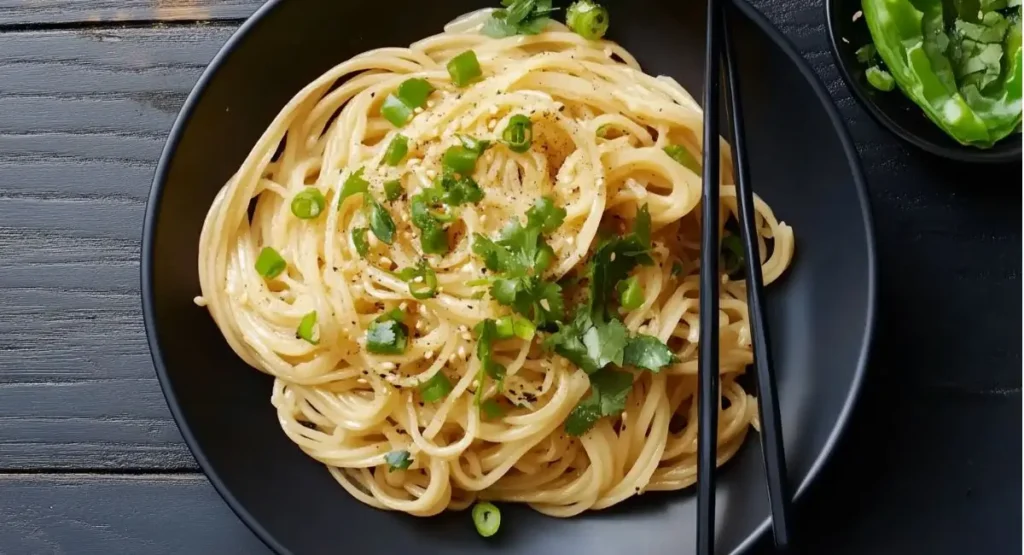
The Parmesan Question: Authenticity vs. Deliciousness
Let’s address the elephant in the room: Parmesan cheese in a Vietnamese noodle dish? It’s true that cheese is not a traditional ingredient in Vietnamese cuisine from Vietnam. However, Vietnamese Garlic Noodles as widely known, especially in the US, are a product of Vietnamese-American fusion cuisine. The addition of Parmesan likely originated in restaurants seeking to add richness and a familiar umami kick that resonates with Western palates.
So, is it “authentic”? Not to traditional Vietnamese cooking. Is it authentic to the popular Vietnamese-American restaurant version? Absolutely. Does it taste amazing? Most people agree – YES! The salty, nutty umami of Parmesan melts beautifully into the garlic butter sauce, creating an incredibly satisfying depth of flavor. Feel free to omit it if you prefer, but don’t knock it ’til you try it as part of this specific dish’s identity!
What to Serve with Vietnamese Garlic Noodles
These noodles are rich and flavorful, so they pair well with simpler accompaniments:
- Grilled Meats: Lemongrass grilled chicken, pork chops, or beef skewers.
- Steamed or Roasted Vegetables: Broccoli, bok choy, asparagus.
- Simple Salad: A light-green salad with a vinaigrette.
- Seafood: Grilled shrimp skewers, pan-seared scallops.
- They are often substantial enough to be a main course on their own!
Storage and Reheating Instructions
- Storage: Store leftover garlic noodles in an airtight-container in the refrigerator for up to 03 days.
- Reheating: These noodles are best reheated gently on the stovetop. Add the noodles to a skillet over medium-low heat with a splash of water or broth to help loosen them up and prevent drying out. Toss gently until heated through. Microwaving can sometimes make the noodles rubbery, but if you must, use short intervals on medium power, stirring in between. The texture won’t be quite the same as fresh, but the flavor will still be good.
Troubleshooting Common Issues
- Noodles are Clumpy/Sticking: You may not have used enough oil after draining, or they sat too long. Adding a splash of the reserved-pasta water (or plain water/broth if reheating) while tossing over low heat usually helps loosen them.
- Sauce is Too Oily: This can happen if the butter-to-noodle ratio is off or if the sauce didn’t emulsify well. A tiny splash of hot pasta water while tossing vigorously can sometimes help bind it. Ensure your noodles were drained well.
- Garlic Tastes Bitter/Burnt: You cooked the garlic over too high heat or for too long. Unfortunately, there’s no fixing burnt garlic flavor. Start the sauce over, cooking the garlic gently on low heat until just fragrant and pale gold.
- Flavor is Flat: Did you use enough garlic? Good quality fish sauce? Don’t forget the sugar for balance and pepper for kick. Taste and adjust seasonings at the end. A squeeze of lime-juice before serving can also brighten flavors (though not traditional).
Frequently Asked Questions (FAQ)
u003cstrongu003eWhat kind of noodles are best for Vietnamese Garlic Noodles?u003c/strongu003e
Spaghetti (regular or thin) is the most common and recommended for achieving the classic restaurant texture. Asian egg noodles can also work.
u003cstrongu003eAre Vietnamese Garlic Noodles spicy?u003c/strongu003e
This recipe is not inherently spicy, relying on savory, garlicky flavors. You can easily add red-pepper flakes or sriracha to make it spicy.
u003cstrongu003eCan I make Vietnamese Garlic Noodles ahead of time?u003c/strongu003e
They are truly best served immediately. While you u003cemu003ecanu003c/emu003e reheat leftovers (see instructions above), the texture is optimal when fresh. You can prep the ingredients (mince garlic, measure sauces) ahead of time to speed up the cooking process.
u003cstrongu003eIs there a substitute for fish sauce?u003c/strongu003e
Fish sauce provides a unique umami. For a non-fish alternative, you could try using more soy sauce (or tamari for gluten-free) potentially combined with a bit of nutritional yeast or finely crumbled seaweed for umami, but the flavor profile will be different. For vegetarian/vegan, use dedicated vegan fish sauce.
Conclusion
You can easily make delicious Vietnamese Garlic Noodles at home! With good ingredients and careful cooking (especially the garlic!), you can prepare these tasty noodles whenever you want. This dish shows the wonderful flavors of Vietnamese-American cooking. Enjoy every buttery, garlicky bite!
Related Recipes You Might Enjoy
Did You Make This Recipe!
There are no reviews yet. Be the first one to write one.
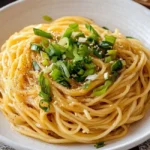
Vietnamese Garlic Noodles Recipe
- Total Time: 25 minutes
- Yield: 4
Description
Experience noodle nirvana! Slippery noodles coated in an intensely savory, garlicky, buttery sauce with umami & sweetness. This easy-to-follow recipe recreates the beloved Vietnamese-American restaurant classic right in your kitchen.
Ingredients
For the Noodles:
- 1 lb 450g Spaghetti (Regular or thin recommended, see notes)
- Salt (for boiling water)
- 1 tsp Neutral Oil (Optional, for preventing sticking after draining)
For the Garlic Butter Sauce:
- 1/2 cup 1 stick or 113g Unsalted Butter
- 8–10 large cloves Garlic (finely minced (about 1/4 to 1/3 cup – use fresh!))
- 3 Tablespoons Premium Fish Sauce (nuoc mam)
- 2 Tablespoons Oyster Sauce
- 2 Tablespoons Granulated Sugar (or Brown Sugar)
- 1 Tablespoon Low Sodium Soy Sauce (optional)
- 1/2 teaspoon Freshly Cracked Black Pepper (or to taste)
- 1/4 cup Finely Grated Parmesan Cheese (See notes)
- 1 cup Reserved Starchy Pasta Water (approx., use as needed)
For Garnish (Optional):
- Chopped Fresh Cilantro
- Thinly Sliced Green Onions (scallions)
Instructions
- Cook Noodles: Bring a large pot of generously salted water to a boil. Add spaghetti and cook until al dente (usually 1-2 mins less than package time). Before draining, reserve about 1 cup of pasta water. Drain noodles well. Optional: toss drained noodles with 1 tsp neutral oil to prevent sticking.
- Start Sauce: While noodles cook or just after draining, melt butter in a large skillet/wok over medium-low heat.

- Cook Garlic: Add minced garlic to melted butter. Cook gently, stirring constantly, for 2-3 mins until fragrant and very lightly golden. DO NOT BROWN OR BURN. Lower heat if needed.
- Combine Sauce Ingredients: Whisk fish sauce, oyster sauce, sugar, soy sauce (if using), and black pepper into the garlic butter. Stir until sugar dissolves. Simmer gently for 1 minute.

- Add Noodles & Cheese: Add drained noodles and grated Parmesan cheese to the skillet with the sauce.
- Toss: Using tongs, toss noodles continuously but gently for 1-2 minutes to coat every strand evenly.
- Adjust Consistency: If sauce is too thick or noodles stick, add reserved pasta water, 1-2 Tbsp at a time, tossing until glossy and desired consistency is reached.
- Taste & Adjust: Taste and adjust seasoning if necessary (pepper, fish sauce).

- Garnish & Serve: Remove from heat. Transfer to serving platter/bowls. Garnish generously with cilantro and green onions. Serve immediately.
Notes
Noodles: Spaghetti is commonly used for its texture. Asian egg noodles work but cook faster. Cook al dente.
Garlic: Use FRESH minced garlic for best flavor. Don’t burn it!
Parmesan: Key to the Vietnamese-American version for umami and richness. Omit if preferred, but the flavor will differ.
Pasta Water: Essential for adjusting sauce consistency. Don’t forget to reserve it!
Heat Control: Keep heat medium-low when cooking garlic and tossing noodles to prevent burning.
Variations: Add cooked shrimp, chicken, tofu, or beef. Add red pepper flakes with garlic for spice.
Storage: Refrigerate leftovers in an airtight container for up to 3 days. Reheat gently on the stovetop with a splash of water/broth.
- Prep Time: 10 minutes
- Cook Time: 15 minutes
- Category: Main Course
- Cuisine: Vietnamese-American

